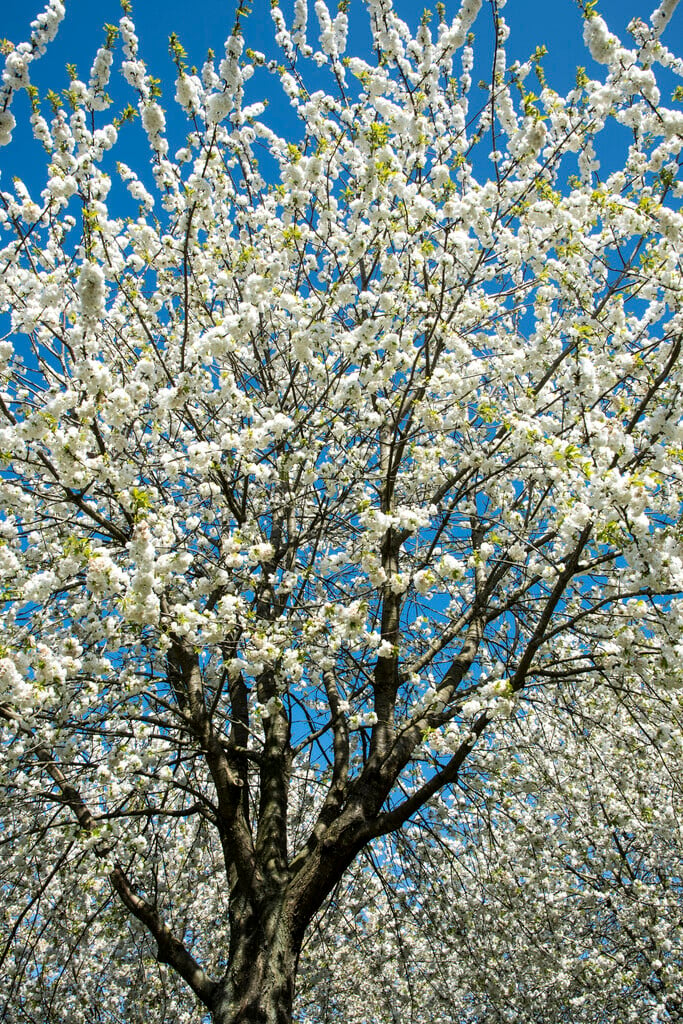Prunus avium 'Plena' (d)
double gean
A spreading, deciduous tree about 12m in height, with dark green leaves to 15cm long, bronze when young, turning red and yellow in autumn. Profuse, pure white double flowers in pendulous clusters in mid-spring
Size
Ultimate height
8–12 metresTime to ultimate height
20–50 yearsUltimate spread
Wider than 8 metresGrowing conditions
Moisture
Moist but well–drained, Well–drainedpH
Acid, Alkaline, NeutralColour & scent
| Stem | Flower | Foliage | Fruit | |
| Spring | White | Bronze Green | ||
|---|---|---|---|---|
| Summer | Green | |||
| Autumn | Orange Yellow Red | |||
| Winter |
Position
- Full sun
Aspect
South–facing or West–facing or East–facing or North–facing
Exposure
Exposed or Sheltered Hardiness
H6Botanical details
- Family
- Rosaceae
- Native to GB / Ireland
- No
- Foliage
- Deciduous
- Habit
- Spreading branched
- Genus
Prunus can be deciduous or evergreen trees or shrubs with showy flowers in spring, and often good autumn foliage colour. Some have edible fruit in autumn, and a few species have ornamental bark
- Name status
Accepted
How to grow
Cultivation
Grow in moderately fertile soil in full sun
Propagation
Propagate by chip budding or grafting, although softwood cuttings in early summer with bottom heat can be successful
Suggested planting locations and garden types
- Cottage and informal garden
- Wildflower meadow
Pruning
Pruning group 1. Prune in mid-summer if silver leaf is a problem
Pests
May be susceptible to cherry blackfly, pear and cherry slugworm and winter moth caterpillar. The fruit can be damaged by spotted wing drosophila and birds
Diseases
May be susceptible to peach leaf curl, silver leaf, bacterial canker, blossom wilt and honey fungus
Get involved
The Royal Horticultural Society is the UK’s leading gardening charity. We aim to enrich everyone’s life through plants, and make the UK a greener and more beautiful place.

